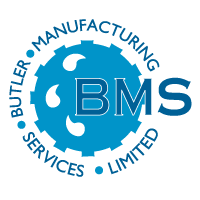Sewage Parameters 6 Part 1: Total Nitrogen
Hi,
we are back to discuss how to lower the total level of Nitrogen from inlet to outlet of a sewage treatment plant. Total Nitrogen is often abbreviated to TN or N. The reduction of TN is a two stage process involving the conversion of Ammonia (NH4) to Nitrates (NO3) termed Nitrification, followed by the conversion of NO3 to Nitrogen (N) and Oxygen (O2) gas which is given off in the atmosphere, termed Denitrification.Why reduce the levels of nitrogen in water?There are a number of reasons for reducing total Nitrate Nitrogen:1. Nitrates (NO3) can be toxic in amounts greater than 45 mg/l.2. Nitrites (NO2) the more unstable form of NO3 is highly toxic to aquatic species.3. Although NO3 cannot be used as easily as Ammonia (NH4) by plants to make protein, it can still lead to eutrophication (where water becomes organically enriched, leading to increasing domination of aquatic plants, transformation to marsh land and eventually to dry land)...In practice eutrophication normally does not go past the stage of aquatic plant bloom, but if serious pollution does place can lead to total destruction of rivers/lakes. Total Nitrogen limits of 15 mg/l or below or now often being specified for new treatment plants and when existing effluent discharge licenses are being updated.Nitrogen exists in many forms in nature. In summary it starts as plant/animal protein, then degrades quickly to Ammonia, Ammonia is then converted to Nitrates (Nitrification), which if the right environment is present, will be converted to Nitrogen and Oxygen gas, which is given off into the atmosphere. The gaseous Nitrogen is then returned to the food chain via nitrogen fixing bacteria/algae and fertiliser etc.Therefore, in wastewater terms, to reduce the TN levels, the sewage first needs to be nitrified (ammonia converted to nitrates) as discussed in previous articles. Then this nitrified sewage needs to be converted to Nitrogen and Oxygen Gas. This process is called Denitrification. Denitrification is a more difficult process to manage than nitrification. It will take place if nitrified effluent is mixed with a carbon source (normally incoming sewage) in anoxic conditions for a sufficient amount of time.This process will be discussed in the next blog installment.If you have any specific queries or there is any topics you would like explored, please do not hesitate to contact me, Tommy.
A bit about the company:
Butler Manufacturing Services is a family owned specialist manufacturer of package (all in one) products for sewage treatment and surface water treatment established in 1986 with exports to 38+ countries worldwide including the world leading Blivet package sewage treatment plant, a ‘one stop shop’ for all surface water products from design to installation including attenuation, interceptors, holding tanks (incl. chemical resistant), hydrobrakes, rainwater harvesting tanks/filters & vortex silt separators, chlorine contact tanks, fully fitted pump stations and pumps, our 'all in one' vehicle wash water recycling system with zero discharge and much more.If there is a requirement for any of above on any project that you are working on we would welcome the opportunity to work on a solution with you.© Butler Manufacturing Services 2013.

